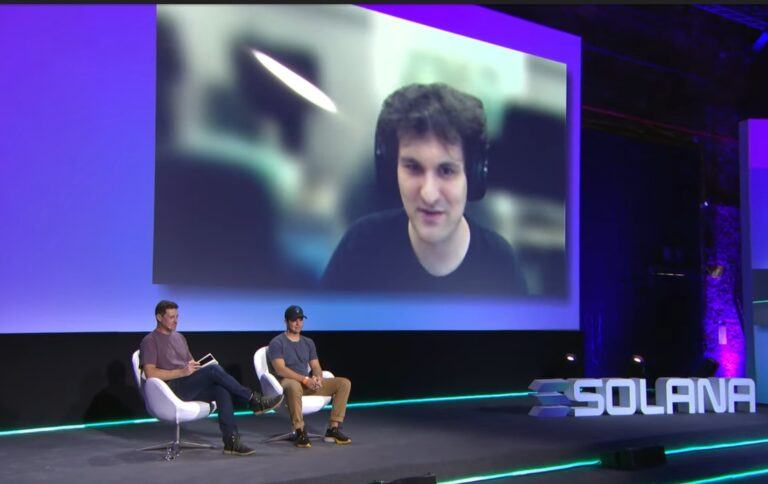Last Friday (September 9), FTX Co-Founder and CEO Sam Bankman-Fried (“SBF”) gave an interview, during which he shared his thoughts on Ethereum’s upcoming Merge upgrade, which marks the transition of the network from proof-of-work (PoW) to proof-of-stake (PoS).
Here is how Ethereum Foundation explains the Merge:, which is expected to take place on the Ethereum mainnet around September 15:
“The Merge represents the joining of the existing execution layer of Ethereum (the Mainnet we use today) with its new proof-of-stake consensus layer, the Beacon Chain. It eliminates the need for energy-intensive mining and instead secures the network using staked ETH. A truly exciting step in realizing the Ethereum vision – more scalability, security, and sustainability.
“It’s important to remember that initially, the Beacon Chain shipped separately from Mainnet. Ethereum Mainnet – with all it’s accounts, balances, smart contracts, and blockchain state – continues to be secured by proof-of-work, even while the Beacon Chain runs in parallel using proof-of-stake. The approaching Merge is when these two systems finally come together, and proof-of-work is replaced permanently by proof-of-stake.
“Let’s consider an analogy. Imagine Ethereum is a spaceship that isn’t quite ready for an interstellar voyage. With the Beacon Chain, the community has built a new engine and a hardened hull. After significant testing, it’s almost time to hot-swap the new engine for the old mid-flight. This will merge the new, more efficient engine into the existing ship, ready to put in some serious lightyears and take on the universe.“
SBF’s comments were made during an appearance on CNBC’s “Squawk Box”.
According to a report by The Daily Hodl, the FTX CEO had this to say about the Merge:
“I think long term it’s probably going to exciting for the Ethereum community. I think it’s going to allow substantially faster and cheaper processing and transactions… I do think that it’s going to be – as all big transitions are – a little bit rocky at the beginning. I think there’s going to be some messy activity around when it happens. I think that’s sort of inevitable, both long term and probably even medium term.“
He also said:
“I think that first of all, there are going to be some forks of this. As you look at some people who want a proof-of-work (PoW) variant on it, although I think everyone is expecting that the bulk of the activity in transition to be a proof-of-stake Ethereum through this merge. Obviously, there’s going to be a lot of people in the ecosystem that will have to update software that have to start processing the new chain.
“Many of those are going to be promptly ready to do it, some of those probably are not. I expect that APIs are going to break in ways that people didn’t quite predict, and there’s going to have to be bug fixes at least on centralized entities…
“It’s a big transition, and anytime that happens, especially when it’s just not one company doing it, when it’s an entire decentralized ecosystem and all the decentralized and centralized entities in it try to transition all at once, some people are going to flub the transition and take some time to clean it up.“
https://youtube.com/watch?v=6AlCRnMkymw%3Ffeature%3Doembed
On August 16, BitMEX Co-Founder (and former CEO) Arthur Hayes published a blog post (titled “ETH-flexive”), in which he talked about the consequences of a successful and a failed Merge event:
“If the merge is successful, there is a positive reflexive relationship between the price and the amount of currency deflation. Therefore, traders will buy ETH today, knowing that the higher the price goes, the more the network will be used and the more deflationary it will become, driving the price higher, causing the network to be used more, and so on and so forth. This is a virtuous circle for bulls. The ceiling is when all of humanity has an Ethereum wallet address.
“If the merge is not successful, there will be a negatively reflexive relationship between the price and the amount of currency deflation. Or, to put it another way, there will be a positively reflexive relationship between the price and the amount of currency inflation. Therefore, in this scenario, I believe traders will either go short or choose not to own ETH.
“There is a floor to this relationship in that the network is the longest operating decentralised network. ETH hit a very large marketcap without a merge narrative. The most popular dApps are built using Ethereum, and Ethereum also possesses the largest number of developers of any layer-1 chain. In light of that, and as I mentioned in my previous essay “Max Bidding”, I believe that ETH won’t go lower than the $800 to $1,000 prices it experienced during the TerraUSD / Three Arrows crypto credit meltdown.“
According to Google, at the time of writing (2:49 p.m. UTC on September 12), based on difficulty and hash rate, the Merge is estimated to be 2 days, 20 hours, and 18 minutes away:
Source: Read Full Article

